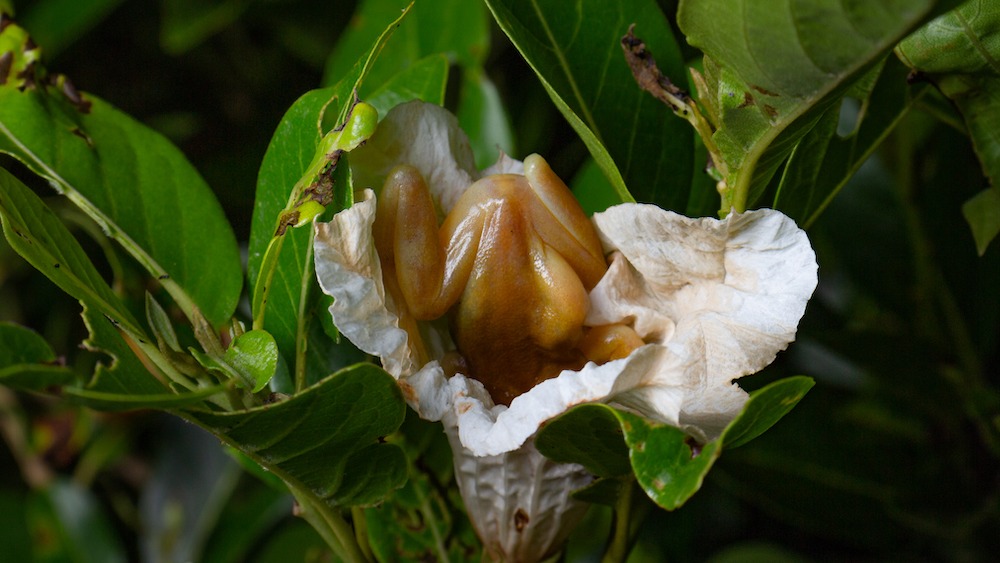Brazilian tree frogs could be the 1st example of amphibians pollinating flowers, study finds
Scientists in Brazil may have observed the first example of an amphibian pollinating a flowering plant.
While most frogs eat a diet rich in insects, one species in Brazil has its own method of nourishment: dunking itself headfirst into a flower's bulb to slurp up its sweet nectar. When the frog comes up for air, pollen grains stuck to its rust-colored body get dispersed as it hops from flower to flower in the forest.
Scientists think this could be the first time an amphibian has been observed pollinating flowering plants, according to a study published in the June issue of the journal Food Webs.
"We observed individuals entering large flowers and leaving covered in pollen without destroying the flower structures," lead author Carlos Henrique de-Oliveira-Nogueira, a graduate student at the Federal University of Mato Grosso do Sul in Brazil, told Live Science in an email. "This was the first time this behavior (actively seeking fruits and flowers) was seen and documented."
It's long been known that species other than bees, including bats and birds, can act as pollinators. But scientists were surprised to see an Izecksohn's Brazilian tree frog (Xenohyla truncata) performing a similar behavior on a Brazilian milk fruit tree (Cordia taguahyensis), known for its creamy-white flowers, according to the study.
One evening, the team watched as two frogs "lapp[ed] up nectar from inside the bell-shaped flowers" in eastern Brazil's Restinga forests and then spread the pollen around, The New York Times reported.
Related: Otherworldly 'Lord of the Rings' frog discovered in the mountains of Ecuador
Normally, frogs prefer to dine on moths and insects, which they capture by sticking out their long tongues.
Get the world’s most fascinating discoveries delivered straight to your inbox.
"Most frog species are carnivorous in their adult phase," de-Oliveira-Nogueira told Live Science. He said there are other frogs that are known to feed on plant parts. But in Brazil, X. truncata is the only one. "Here, we confirmed how opportunistic X. truncata seems to be. It feeds on both insects and plants — apparently anything that is available for consumption," he told Live Science.
However, he cautioned that more research needs to be done before this species can be classified as a bona fide pollinator.
"This was amazing and left us with many questions that still need answers," he said. "The species meets some of the requirements to be a pollinator, but we still need further study to actually prove this."
Felipe Amorim, a pollination ecologist at São Paulo State University in Brazil who wasn't involved in the study, agreed.
"We cannot say that these frogs are actually pollinators," Amorim told The New York Times. "They are flower visitors, they are flower-visitor frogs. We have a lot to learn about this novel interaction."
Jennifer Nalewicki is former Live Science staff writer and Salt Lake City-based journalist whose work has been featured in The New York Times, Smithsonian Magazine, Scientific American, Popular Mechanics and more. She covers several science topics from planet Earth to paleontology and archaeology to health and culture. Prior to freelancing, Jennifer held an Editor role at Time Inc. Jennifer has a bachelor's degree in Journalism from The University of Texas at Austin.



